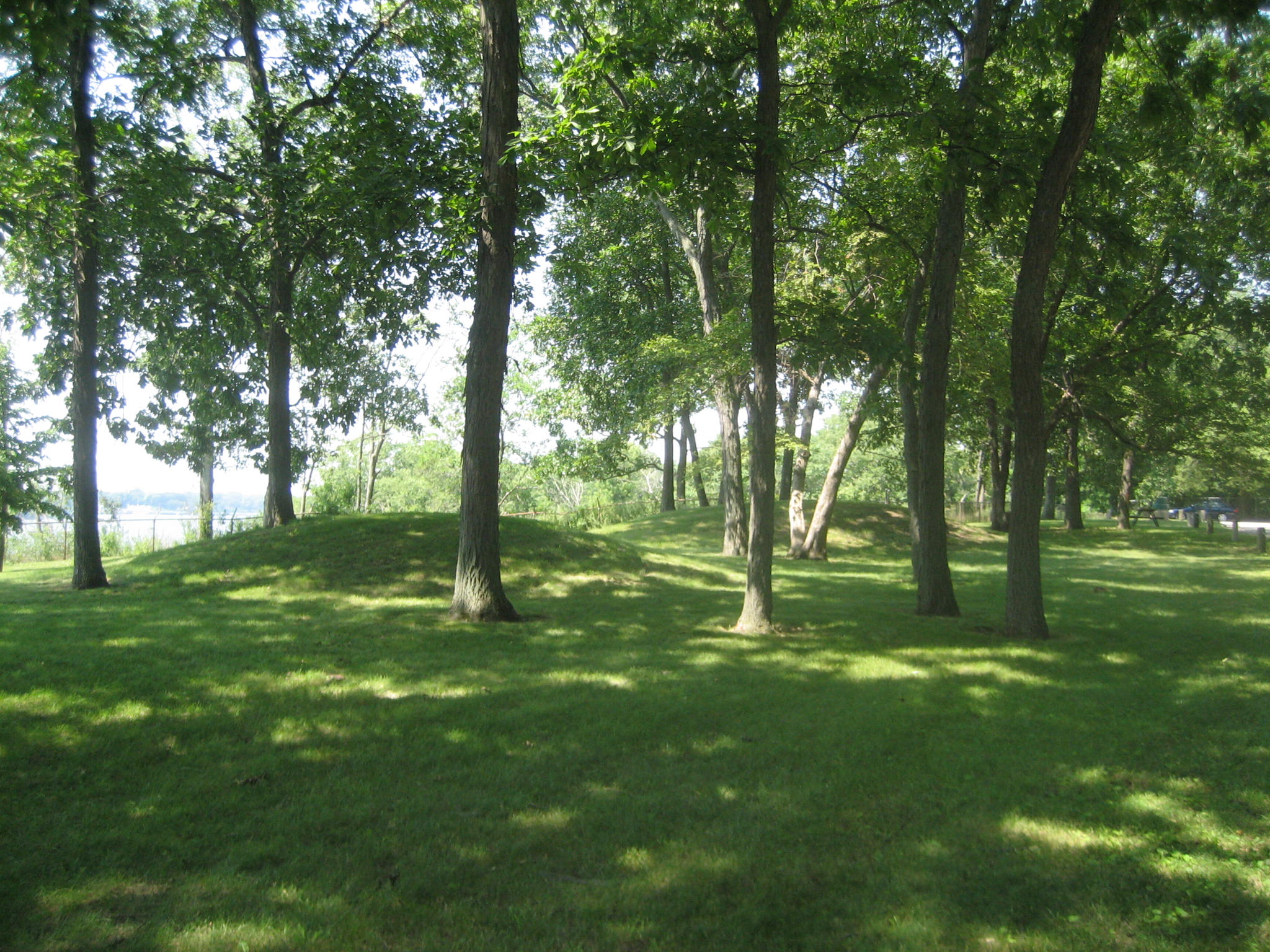- Sinnissippi Mounds
Infobox nrhp
name = Sinnissippi Site
nrhp_type =

caption =
location = Sterling, Whiteside County,Illinois , USA
nearest_city =
lat_degrees = 41
lat_minutes = 47
lat_seconds = 50
lat_direction = N
long_degrees = 89
long_minutes = 39
long_seconds = 35
long_direction = W
area =
built = c. 1 BCE
architect =
architecture =Burial mound
added =May 14 ,1979
visitation_num =
visitation_year =
refnum =
mpsub =
governing_body = Sterling Park DistrictThe Sinnissippi Mounds are aHopewell burial mound grouping located in the city ofSterling, Illinois ,United States .History
The mounds are a product of the
Hopewell culture which flourished in the Sterling area around 2,000 years ago. At that time, the area was at the center of a vast trade network that stretched up and down theMississippi River . Mounds such as the Sinnissippi are common throughout the Mississippi andOhio River Valley s.Walters, Andrew. " [http://www.saukvalley.com/articles/2007/02/12/news/local/310954475095506.txt Historian's work unravels mystery of local mounds] ", "saukvalley.com",February 12 ,2007 , accessedApril 15 ,2008 .]Modern Discovery
The first settler in Sterling, Hezekiah Brink, noted the mounds when he arrived in 1834. Among some of the other early settlers were a group of men who were interested in starting a Science Club. The Sterling Scientific Club, in existence as early as the 1870s, made one of their goals the investigation of the
burial mound s near the Rock River.Benson, Gunner. " [http://www.svonline.net/~srfhs/story9.html The Sinnissippi Mounds in Sterling, Illinois] ", June, 1972, accessedApril 15 ,2008 .] W. C. Holbrook investigated the mounds in 1877 and published a lengthy written account in "History of Whiteside County, Illinois", published 1877. One year later, another written account of a mound investigation appeared in "The Sterling Gazette". After the 1870s, the burial mounds were looted and most of the archaeologically significant material removed.innissippi Site
The Sinnissippi Mounds are part of the Sterling Park District's largest park, Sinnissippi Park. The park was acquired in parcels beginning in 1934" [http://www.sterlingparkdistrict.org/index.php?option=com_content&task=view&id=82&Itemid=106 Sinnissippi Park] ", "Sterling Park District", official site, accessed
April 15 ,2008 .] The area of the park where the mounds are found, on abluff overlooking the Rock River, was added to the U.S.National Register of Historic Places onMay 14 ,1979 as the Sinnissippi Site. It is listed as one of the National Register's "address restricted" sites, despite it public nature. [http://www.nr.nps.gov/ National Register Information System Query] , "National Park Service", accessedApril 15 ,2008 .]References
External links
* [http://www.sterlingparkdistrict.org/ Sterling Park District]
Wikimedia Foundation. 2010.
